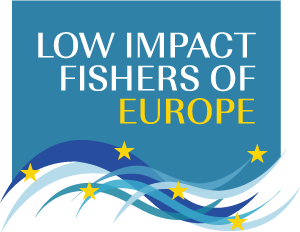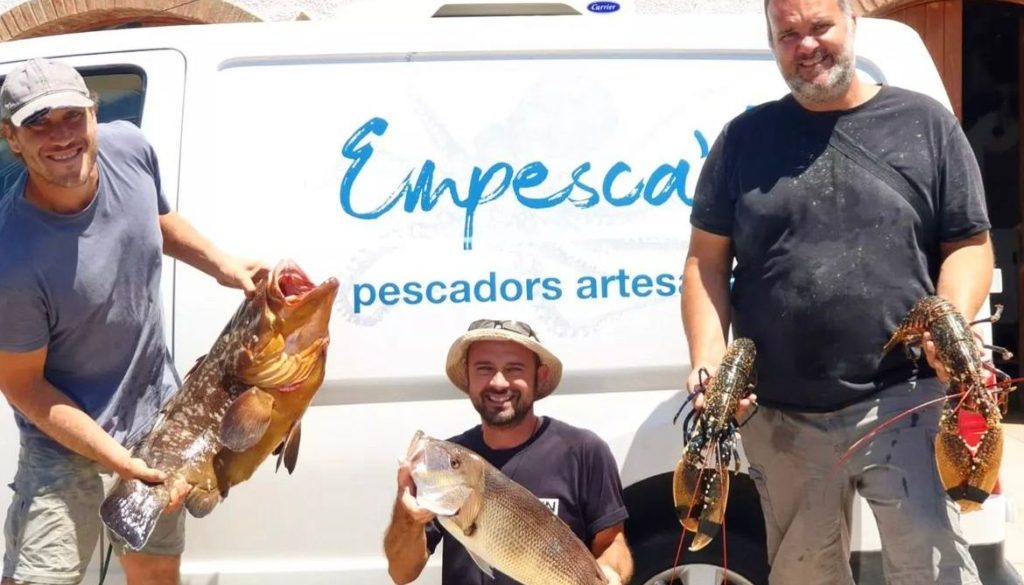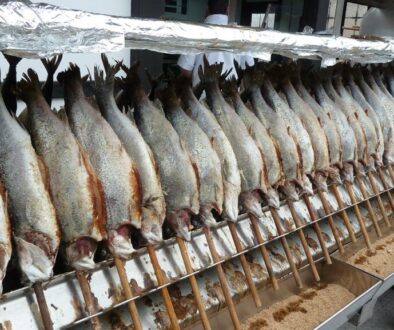U luci na Costa Bravi, sjeverno od Barcelone, udruga Arts Menors Costa Brava, članovi LIFE-a, shvaćaju da održivost njihove profesije ne leži u uzimanju većeg ulova iz mora, već u traženju većeg ekonomskog povrata postojećeg, dajući vrijednost svom radu i svojim proizvodima. U tu svrhu odlučili su promijeniti način prodaje svog ulova, odmaknuvši se od trenutnog modela ribarnica i aukcija te prodajući izravno bez posrednika, sklapajući ugovore s krajnjim kupcima po fiksnoj cijeni po sezoni. S druge strane, Empesca't je brend koji jamči dodanu vrijednost svojih proizvoda, a koju sami reguliraju, upravljaju i certificiraju.
Bilo je nekoliko godina zajedničkog rada kroz projekte kao što su Synepesca a sada i Foodnected, interne rasprave među ribarima, razmjena iskustava radi posjeta inspirativnim modelima u drugim zemljama poput Goliona (koji predvodi Syndicat Petit Metier d'Occitanie), sastanci s upravom, papirologija i razni napori… uz odlazak na ribolov! U posljednjih nekoliko mjeseci radilo se na uključivanju restorana i poljoprivrednih zajednica u tom području, koji se ne smatraju klijentima već suradnicima jer dijele iste vrijednosti i transformirajuću viziju trenutnog prehrambenog sustava.
Marta Cavalle, mediteranska koordinatorica programa LIFE, nedavno je intervjuirala jednog od ribara koji stoje iza ovog projekta, Isaaca Moyu, kako bi drugi članovi programa LIFE saznali više o njemu i o Empesca'tu.
Isaac, ti si mladi ribar s određenom pozadinom. Reci nam nešto o sebi, svojoj karijeri i kako si postao ribar.
Imam 37 godina. Postao sam ribar zbog interesa koji sam oduvijek imao za more. Moj djed je imao dobar odnos s ribarima, imao je brod i znao je ići u ribolov kako bi donio ribu kući. Uvijek sam išao s njim i to mi se jako svidjelo. Jednog dana pomislio sam: “Ako voliš more, životinje i kontakt s okolišem... postani ribar!”
Tako sam se počeo pitati kako se to može postati, dao sam otkaz i otišao studirati dvije godine u l'Ametlla de Mar 2007. Nakon što završite školu, još uvijek morate biti na brodu dvije godine kako biste potvrdili titulu i postali skiper, pa sam se morao ukrcati na tri različita broda: jedan u San Feliu de Guixolsu, loveći tunu i sabljarku površinskim parangalom, a dva druga pridnenim parangalom. Bilo je jako teško, nije imalo nikakve veze s odlaskom na ribolov s djedovim malim brodom.
Nakon dvije godine dobio sam titulu skipera, ali nisam imao ni lipe, a trebao sam kupiti brod koji vrijedi između 30 i 40 000 eura, pa sam radio kao skiper na čarter jahti, koliko mi je titula to dopuštala, dok nisam skupio dovoljno novca za kupnju prvog broda za ribolov. Bio je to jako stari brod, ostavljao sam ga izvan vode kod rođaka i popravljao ga tijekom zime. Zatim sam počeo loviti ribu zimi i možda 7 godina kasnije vidio sam da sam sposoban i da imam nešto novca, te sam odlučio posvetiti se ribolovu 100%.
Ribolov mi je probudio veći interes i počeo sam raditi na drugim projektima poput projekta Sepia, zatim smo počeli surađivati s LIFE-om, osnovali smo udrugu Arts Menors Costa Brava i u projektima poput Synepesce ili sada Foodnecteda. I od tamo… znate… rastem osobno i kao ribar.
Vjerujete li da je ribolov u vašem području održiv i ekološki prihvatljiv? Koje su mjere poduzete za potporu toj održivosti?
Teško je odgovoriti na to pitanje, ono što znam jest da smo mala skupina ribara u ovoj luci. Važno mi je da je posljednjih godina došlo do promjene mentaliteta, ljudi su u prošlosti mislili da je more neiscrpno, ali stvarnost nas je postavila na svoje mjesto, znamo da su resursi ograničeni. To nam je otvorilo umove za promjenu ribolovnog napora i dovelo nas do provedbe projekata i mjera za poboljšanje ribolova i stanja resursa, poput projekta Sepia i drugih.
Također je istina da postoje i drugi čimbenici koje ne kontroliramo, poput klimatskih promjena, zagađenja… koji također utječu na stanje mora. Rijeke više ne donose toliko vode i hranjivih tvari kao nekada. Lov školjki nestao je s ovog područja, postoje mnoge promjene koje se ne mogu objasniti samo prekomjernim iskorištavanjem. Stariji su ti koji to najviše primjećuju, ne lovimo ni desetinu onoga što su oni nekad lovili. Ako nastavimo ovim tempom, nitko se neće povući iz ribolova.
Nekoliko puta si mi rekao da postoje različiti načini da se postane ribar….
Kad sam počeo, nisam znao kako pristupiti poslovnom projektu. Jedan od mogućih načina bio bi ulaganje u više mreža, više udica, više ribolovnog napora, jer je inače teško spojiti kraj s krajem. Postoje tjedni kada možete fakturirati 3000 €, ali to nije normalno, a ponekad ne možemo ići u ribolov tjednima. Što se mene tiče, ako zaradim 1000 € neto mjesečno, sretan sam. Ima ljudi koji će zaraditi više, ali ne mogu biti siguran da se strogo pridržavaju pravila. Ne želim biti ilegalan, pa, budući da vidim da ekstraktivni sustav ne može ići dalje, ono što sada tražim jest postići veći prinos po ulovu i zato smo ga i osnovali. Empescat’, u nadi da će moći postići 15 do 20% veći ekonomski prinos.
Objasnite nam što je Empesca't?
“Empesca't” je kvalitetna marka za naše proizvode, regulirana, upravljana i certificirana od strane našeg udruženja Arts Menors Costa Brava. Ovaj smo brend stvorili kako bismo dali ime onome što radimo svaki dan s našim načinom ribolova, koristeći različite pasivne alate sezonski, poštujući zatvaranja, minimalne veličine ili ograničenja napora te promičući dobre ribolovne prakse i sudjelovanje u projektima. Temeljna os je kvaliteta i održivost, poznajemo stanje mora i željeli smo tu dodanu vrijednost donijeti u ruke potrošača koji je cijeni.
S druge strane, poslužujemo ribu bez posrednika, izravno po fer cijeni za nas i s većom transparentnošću za potrošače.
Recite nam nešto o ovoj izravnoj i dostojanstvenoj prodaji, po čemu se model Empesca't razlikuje od trenutnog modela u Kataloniji?
Model uspostavljen ovdje u Kataloniji je model ribarnice i silazne aukcije. Izravni marketing je zabranjen. Do sada smo obično donosili ribu iz luke na ribarnicu, 40 km od naše kuće, gdje se generirala aukcijska prodaja gdje su veletrgovci kupovali po cijeni koja je padala. Cijene koje smo dobivali bile su vrlo niske i nestabilne. S Empesca'tom smo željeli dati pristojnu cijenu brodovima udruge, kupujemo vlastitu ribu putem tvrtke ribara koju smo osnovali i putem ugovora o hrani. To je ugovor između broda i naše tvrtke ribara gdje su fiksne cijene određene prema vrsti i veličini po sezoni. Cijene je odredila cijela udruga. Uprava nam je dopustila da provedemo pilot test u tom smislu i možemo obaviti prvu prodaju u našoj luci na ugovorni način i legalan način.
Na kraju, je li put naprijed za same ribare-obrtnike da plasiraju vlastitu ribu na tržište i određuju cijene?
Razumijem da industrijski ribolov, koji dnevno nosi mnogo kilograma u luku, treba strukturu, centraliziranu prodaju, kamione koji idu posvuda itd., i sustav bi im mogao funkcionirati. Ali obrtnički ribolov, na kraju krajeva, su mali brodovi s samo jednom osobom koji prevoze 10-15 kilograma ribe dnevno. Gubi svaki smisao kružiti istim putem kao onaj koji prevozi minimalno 200 ili 300 kilograma, a da se ne možemo razlikovati od njih.
Nadamo se da će ova inicijativa poslužiti kao pokazivanje drugim ribarskim zajednicama s istim poteškoćama mogućeg alternativnog puta naprijed. I ovaj pilotni test postat će nešto što sve male ribarske zajednice u Kataloniji kojima je to potrebno mogu iskoristiti.
Vi ste ribari iz L'Escale i Estartita, dva mjesta gdje nema ribarnice. To je jedan od ključnih faktora koji vas je naveo da izgradite ovaj model, zar ne?
Točno, nije imalo puno smisla da riba koja se lovi u l'Estartitu u 11 sati ide u Palamos, s 40 km do tamo i 40 km natrag; a restoran, koji je 100 m od broda, također putuje istih 80 km da bi je dohvatio. Barem je ova riba prešla 160 km na leđima kada je mogla imati 100 m i mogla se distribuirati biciklom.
Je li to uobičajena riba koju ćemo naći u Empesca'tu ili ćete prodavati i druge vrste ribe koje možda nisu toliko poznate široj javnosti?
Da, tu se suočavamo s vrlo važnim izazovom. Najpoznatije vrste nam se uzimaju iz ruku (brancin, zubatac, orada, grdobina itd.), ali postoji i mnogo vrsta riba koje lovimo, a za njima nema potražnje. Njihovo odvođenje na aukciju rezultira prodajom po vrlo niskim cijenama ili čak povlačenjem jer ih nitko nije kupio. Stoga smo prošli tjedan poslužili 6 kilograma murina u restoranu “Celler de Can Roca”, objasnili smo im problem, da je to vrsta za koju vjerujemo da raste s klimatskim promjenama, ali, međutim, nemamo cijenu na tržištu. Prihvatili su izazov i razvijaju neke recepte kako bismo naučili jesti murinu i konzumirati je. Druge vrste mogu biti zvjezdasta raža, cipli, veliki pauk, atlantski zvjezdast itd. Sve su one, ako su dobro kuhane, vrlo dobre!
Izgradnja zajednice suradnika koji razumiju i dijele filozofiju ključ je uspjeha modela, zar ne?
Ideja iza toga je dati vrijednost lokalnom proizvodu, ulovljenom na zanatski i održiv način. Tražili smo restorane ili poljoprivredne programe koje podržava zajednica, koji razumiju našu filozofiju, dijele je i cijene kvalitetu proizvoda koji im možemo ponuditi. Nismo tražili samo kupce, već želimo da ti ljudi preuzmu projekt i prenesu naše vrijednosti i način na koji ribarimo potrošačima.
Vrlo smo zadovoljni dosadašnjim odazivom. Zasad nismo stvarali niti htjeli stvarati previše buke jer smo u pilot fazi, a ako imamo preveliku potražnju, a nedovoljnu ponudu, to bi moglo biti kontraproduktivno. Ali jako smo sretni i ponosni, posebno vidimo vezu koja se uspostavlja s kupcima, kako u restoranima tako i u obiteljima koje podržava zajednica. Prije nismo imali takav odnos, a sada nas pitaju kako smo ulovili tu ribu i imamo otvoren dijalog s njima. Mislim da je to vrlo obogaćujuće za obje strane!
Tek ste počeli, kakva je vizija za budućnost?
Naša je ideja moći ići u ribolov “na zahtjev” jer vjerujemo da je svaka riba koja nije naručena, što znači da je nitko ne želi, bolja ako je u moru nego u kanti po cijeloj zemlji. To je san, iako će ga biti teško ostvariti. Počeli smo i jako smo sretni jer su izgledi dobri, krenuli smo bolje nego što smo mislili. Projekt je živ i prilagodit ćemo se svemu što se pojavi.
Želite li još nešto podijeliti?
Veliko hvala organizaciji LIFE. Trebamo više ljudi koji će nas podržati kao što to činite vi. Trebamo organizacije poput vas da nas prate na ovom putu kroz ove projekte i ostvare naše ideje kako bismo mogli sanjati o boljoj budućnosti.
Imate li kakvu poruku za potrošače?
Potrošač mora biti iskren i osloniti se na sebe kada je u pitanju kupnja. Ljudi koji su zabrinuti za okoliš ne bi trebali čekati da im političari kažu da moraju učiniti stvari na ovaj ili onaj način. Oni sami mogu biti pokretači promjena. Promjena može doći odozdo prema gore!




